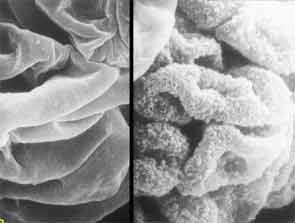The Hong Kong group’s immunosuppressant of choice is mycophenolate. After achieving response, they recommend continuing immunosuppressants for three years, as does EULAR, contending that there is a larger rate of flares if immunosuppression is discontinued after two years.2 In the U.S., ACR guidelines do not state how long immunosuppressives should be continued, because the evidence has not yet reached Level A or B, which both require more than one series.

As she reviewed a plethora of clinical studies, Dr. Hahn encouraged her colleagues to apply a judicious filter to their interpretation of current research. In general, mycophenolate mofetil is a good choice, in addition to glucocorticoids, for inducing and maintaining improvement in lupus nephritis (LN). More controversial is the selection of the “correct” dose of cyclophosphamide. For example, European studies have shown good results for low-dose cyclophosphamide in LN; and British nephrologist Liz Lightstone’s group has shown 80% partial remission at two years with a glucocorticoid-sparing regimen of mycophenolate and rituximab without daily glucocorticoid dosing.3 However, noted Dr. Hahn, approximately 90% of the patients in the latter series were older European Caucasians. Applicability of European and Asian studies to populations treated in the U.S., which include African Americans and Latinos, many of whom are younger and with more severe disease, does not necessarily follow. “We have to think of that when we wonder whether we can apply those data to our populations and abandon the older ways of treatments,” she said.
Kidney transplant is now a viable option for poor responders in LN, said Dr. Hahn, who recalled that when she first started practicing, LN patients were denied transplants on the grounds the “kidney would be wasted” due to the fear of recurrence. In fact, renal-transplant survival rates in patients with SLE are comparable to those in patients without SLE; rejection of graft is the same as in non-SLE patients; and recurrence of SLE is very low, at 3% (which must be confirmed with a renal biopsy).

Glucocorticoids & Cyclophosphamide
Dr. Hahn said that current wisdom dictates that daily prednisone should be kept at or under 6 mg/day to minimize side effects. Questions remaining about glucocorticoids in LN include whether initial IV pulses are necessary, whether long-term daily dose is necessary and what the best doses are for inducing improvement and tapering schedules.
Similarly, despite some short-term trials in African American and Latino patients showing response rates for low-dose cyclophosphamide combined with abatacept in LN, questions remain about the effectiveness of the biologics and combination therapies in all races. Dr. Hahn’s opinion is that abatacept can be a “viable option” for patients whose LN is severe. Other data on anti-CD22, ocrelizumab, suggest that background mycophenolate might be more effective but also more predisposing to infection than low-dose cyclophosphamide.
